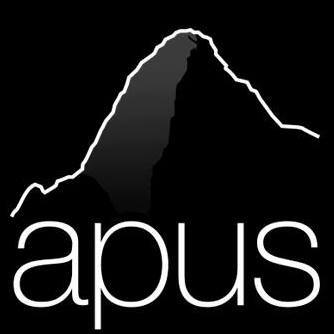2018
Parque Nacional
Río Abiseo
Río Abiseo
Adine Gavazzi, Alfredo Narváez, Blanca León, Federico Kauffmann Doig, Johnny Ramos, Kenneth R. Young, Luis Felipe Villacorta, Pablo Gómez, Rob Williams, Víctor A. Pimentel S., Víctor macedo, Víctor Pimentel Gurmendi, Warren B. Church



Description
A multidisciplinary expedition organized and sponsored by Compañía Minera Poderosa, toured the upper valley of the Montecristo River. To verify the results obtained and obtain the graphic material for this publication, “Abiseo River National Park, Living Memory of the Andean-Amazonian Cultural Landscape”, a multidisciplinary expedition organized and sponsored by Compañía Minera Poderosa, toured the upper valley of the Montecristo River.



Scientific Team
The scientific team was led by anthropologist Víctor Macedo (Sernanp) and by architect and anthropologist Adine Gavazzi (UNESCO Chair, University of Genoa). They were accompanied by archaeologist Pablo Gómez (MINCUL), biologists Johnny Ramos, Rosario Huashuayo, Luís García (Sernanp), surveyors Jimi Saravia and Rafael Moreno (MINCUL), biologist, conservationist and photographer Rob Williams, photographer and conservationist Heinz Plenge and photographer Heinz Plenge Pardo.
Characteristics
Author: Adine Gavazzi, Alfredo Narvaez, Blanca Leon, Federico Kauffmann Doig, Johnny Ramos, Kenneth R. Young, Luis Felipe Villacorta, Pablo Gomez, Rob Williams, Victor A. Pimentel S., Victor Macedo, Victor Pimentel Gurmendi, Warren B. Church
Sponsor: The Powerful Mining Company
Year of publication: 2018
Language: Spanish
Pages: 464
Size: 30 x 28 cm
Legal deposit: 2018-08687
Copyright: Apus Graph Editions, Pataz Association, La Poderosa Mining Company
ISBN: 978-612-47093-4-0
Sponsor: The Powerful Mining Company
Year of publication: 2018
Language: Spanish
Pages: 464
Size: 30 x 28 cm
Legal deposit: 2018-08687
Copyright: Apus Graph Editions, Pataz Association, La Poderosa Mining Company
ISBN: 978-612-47093-4-0



Presentation by
Eva Arias de Sologuren – Powerful Mining Company
Foreword by
Pedro Gamboa – Head of SERNANP
Introduction: heritage protection strategies
Magaly Robalino _ UNESCO Representative – Peru
PART I. NATURAL HERITAGE
Nature and ecology of the Abiseo River National Park
Kenneth R. Young / Blanca León
Conservation and monitoring
Victor Macedo
Eva Arias de Sologuren – Powerful Mining Company
Foreword by
Pedro Gamboa – Head of SERNANP
Introduction: heritage protection strategies
Magaly Robalino _ UNESCO Representative – Peru
PART I. NATURAL HERITAGE
Nature and ecology of the Abiseo River National Park
Kenneth R. Young / Blanca León
Conservation and monitoring
Victor Macedo
Authors
This interdisciplinary team has carried out the first aerial survey of funerary structures in the rock formation surrounding the “Los Pinchudos” site and cave paintings that mark the location.
In Cerro Central, they found a settlement of nearly 200 circular structures with interesting Chachapoya iconography, within a territorial planning, recognizing and understanding the cultural landscape of the place.
They recorded emblematic species, such as the yellow-tailed woolly monkey (Lagothrix flavicauda), the yellow-browed toucanet (Aulacorhynchus huallagae), the first photographic record in the wild, and the spectacled bear (Tremarctos ornatus), all indicators of the good state of conservation of the Park.
Technology and digital innovation are also present within the book through QR codes for two lidar image videos, a documentary video of the expedition and a photo gallery in an interactive pdf showing the community work of Asociación Pataz.
The analysis of each specialist in the different disciplines, visions and perspectives on the national park have contributed great value to the book, generating an academic debate that is useful for science, and at the same time an integrated approach that looks to the future.
Finally, this multidisciplinary edition demonstrates the value of common goals and the success produced by the joint effort between public institutions, private companies, international organizations, communicators and local residents. A model of sustainable development for research, the enhancement and promotion of national and global heritage.
In Cerro Central, they found a settlement of nearly 200 circular structures with interesting Chachapoya iconography, within a territorial planning, recognizing and understanding the cultural landscape of the place.
They recorded emblematic species, such as the yellow-tailed woolly monkey (Lagothrix flavicauda), the yellow-browed toucanet (Aulacorhynchus huallagae), the first photographic record in the wild, and the spectacled bear (Tremarctos ornatus), all indicators of the good state of conservation of the Park.
Technology and digital innovation are also present within the book through QR codes for two lidar image videos, a documentary video of the expedition and a photo gallery in an interactive pdf showing the community work of Asociación Pataz.
The analysis of each specialist in the different disciplines, visions and perspectives on the national park have contributed great value to the book, generating an academic debate that is useful for science, and at the same time an integrated approach that looks to the future.
Finally, this multidisciplinary edition demonstrates the value of common goals and the success produced by the joint effort between public institutions, private companies, international organizations, communicators and local residents. A model of sustainable development for research, the enhancement and promotion of national and global heritage.
